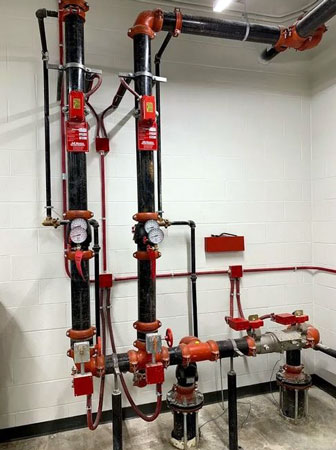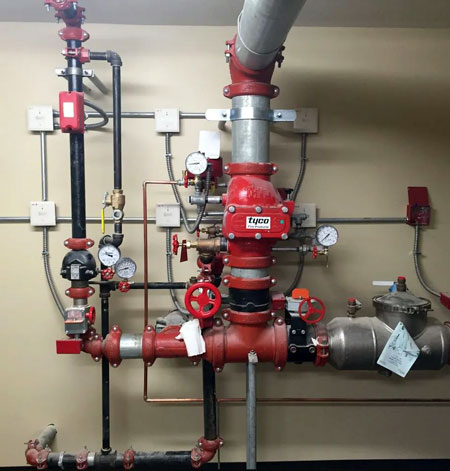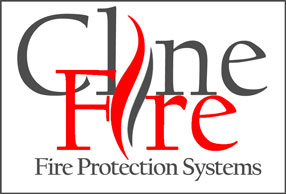Fire Sprinklers Suppression Systems
Fire sprinkler suppression systems are likely the most important fire protection systems, in regards to reducing or eliminating property and equipment loss due to fire. Sprinkler systems are designed and installed throughout buildings to deliver fire suppressing water or other agents directly to the area where a fire is present. Most buildings are required to have a properly designed and operating fire sprinkler system by local codes, state codes, NFPA 25, NFPA 13, NFPA 13R, NFPA 101, and OBC/OFC, and those sprinkler systems are required to be monitored by an NFPA-compliant fire alarm system. Once installed and commissioned, sprinkler systems require annual (sometimes more frequent) inspection and testing to ensure that they are in proper operating condition.
There are several different configurations available for fire sprinkler suppression systems including, but not limited to:
- Wet Pipe/Riser System: Wet pipe sprinkler systems are filled with water in their normal state, which is activated when a sprinkler head is presented with a pre-determined amount of heat. Wet sprinkler systems are installed in areas where the temperature will be maintained several degrees above freezing to ensure that the piping system does not freeze and break.
- Dry Pipe/Riser System: Dry pipe sprinkler systems are filled with air or nitrogen in their normal state, which is activated when a sprinkler head is presented with a pre-determined amount of heat. Dry sprinkler systems are installed in areas such as attics, warehouses, or outside spaces that are typically heated but may be subjected to temperatures at or below freezing.
- Anti-Freeze System/Loop: Antifreeze sprinkler systems (or sometimes just a section of piping on a wet or dry system, typically referred to as a ‘loop”) are filled with a mixture of an antifreeze solution and water and are activated when a sprinkler head is presented with a pre-determined amount of heat. Antifreeze sprinkler systems are installed in areas that are likely to be subjected to temperatures below freezing.
- Pre-Action Sprinkler System: Pre-action sprinkler systems are filled with air or nitrogen in their normal state and require two steps for activation before water is introduced into the system. One step is that a sprinkler head is presented with a pre-determined amount of heat, the second step is that an initiating device from an electronic fire alarm system is activated, such as a heat or smoke detector, which triggers a solenoid to open the valve on the sprinkler system delivering water to the area where the sprinkler head activated. Pre-action systems are used to reduce false activations and are typically installed in buildings or areas where water damage is likely to result in the loss of equipment or rare material and/or where sensitive equipment or material is being stored, such as server rooms, historical buildings, or museums. Pre-action systems can be configured as non-interlock (either/or), single interlock (initiating devices only), or double interlock (both, as described above) to control when water is introduced into the system.
- Fire Pump: Fire pumps are added to fire sprinkler systems when the local water supply is not going to be sufficient to deliver the required water within the building to suppress a fire in accordance with calculated flow rates and system design criteria. Pumps are configured with a controlling electrical panel that integrates with the building fire alarm system and fire sprinkler system.
- Private Fire Hydrant: Private fire hydrants are installed around the exterior perimeter of a facility where the property doesn’t have or allow for public fire hydrants to be present and are used by responding fire departments to supplement or provide a source of water for fire-fighting operations.


Each type of sprinkler system has its own unique benefits, and it’s important to consider many related factors before determining which type and configuration of sprinkler system is most appropriate for your application. Many buildings utilize multiple types of sprinkler systems configurations to provide the best type of coverage in each unique space.
Whether you need installation, service/repair, inspection and testing, or alterations, we are here to help.

